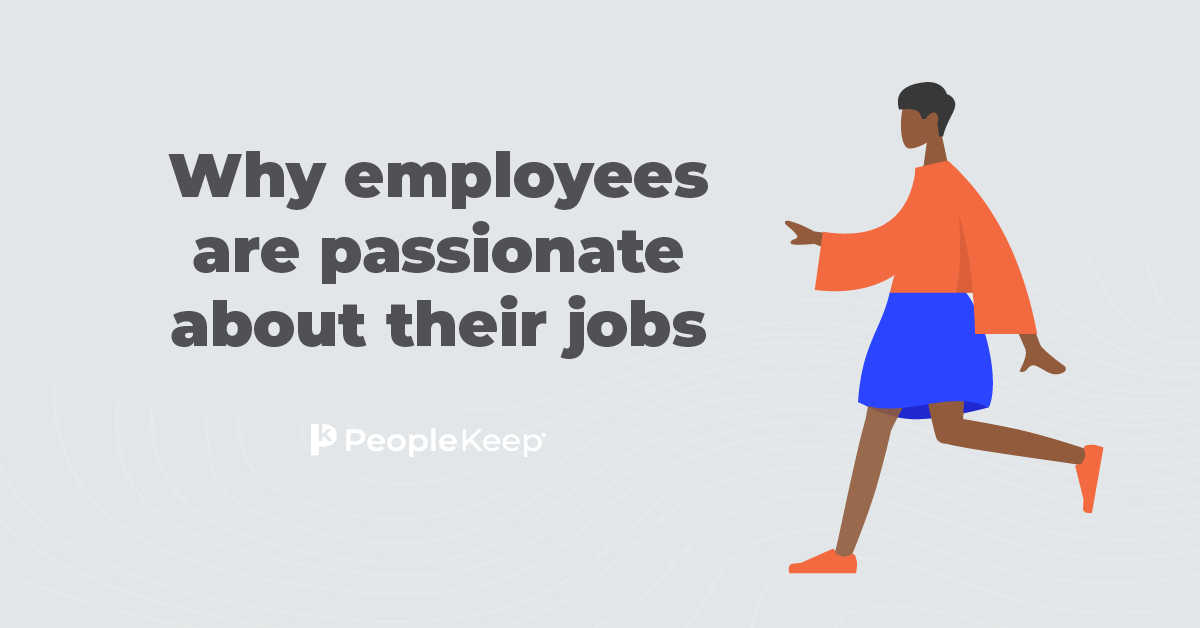What is the right to disconnect?
By Elizabeth Walker on June 14, 2023 at 8:05 AM
Having a hybrid or remote work environment can be beneficial for both employers and employees. But when people work from home, they can feel compelled to always be online and available to work. This could mean checking their email at night, working from their phone when they’re on the go, or answering their boss’s phone calls outside of work hours.
For many employees, not being in a designated workplace blurs the lines between work and life. That’s why the “right to disconnect” has become a more popular movement across the globe. This idea prioritizes a proper balance between work and personal time for employees.
This blog will explain the right to disconnect, where it’s currently required, its pros and cons, and how you can support your employees so they can take time to disconnect and avoid health issues or burnout.
Learn how fringe benefits can better support your employees’ well-being in our guide
What is the right to disconnect?
The right to disconnect is the idea that employers shouldn’t require employees to perform any work-related duties outside their set work hours. The concept suggests workers have the right to a personal life that isn’t interrupted by tasks, such as answering messages or completing projects, once they’ve “clocked out” for the day.
While this isn’t a particularly new idea, the right to disconnect has gained popularity due to the increase in mobile technology and remote work. More employees are working from home, which can sometimes lead to employers reaching out to them more outside of traditional workday hours. But this accessibility can have a negative impact on a worker’s physical and mental health.
That’s why new legislation is circulating about the right to disconnect—although it’s not without pushback. Some employers believe they’re too vague, unenforceable, not flexible enough across time zones, and can’t work for every type of organization.
Even without formal laws, many employers are updating their company policies to include more details around when and how employees can disconnect. This supports their staff’s need for leisure time and a proper work-life balance.
What countries currently have laws about the right to disconnect?
Most countries with legislation on the right to disconnect are in the European Union. France was one of the first to adopt a policy in 2017. Since then, Spain, Italy, Germany, Ireland, Italy, and the Philippines have written laws about disconnecting.
Below is a few examples of how the right to disconnect works in other countries:
- France passed a law in January 2017 requiring employers and unions to support employees' right to disconnect in a way that works best for their business. While the method used to comply with this law is up to the employer, some ideas include having a cut-off time to respond to emails or redirecting emails to other workers when the cut-off point begins.
- In December 2018, Spain created a remote working law, which includes the right to disconnect to promote a proper work-life balance. The law requires employers and employees to agree on a specific time of day to limit all work-related communication.
- Since January 2022, employers in Portugal with ten or more staff members may face a penalty if they contact their employees outside of regular work hours. The “right to rest” law also allows employees to work from home if they have kids under eight years old.
- Ontario enacted its right to disconnect law in June 2022 as part of the Working for Workers Act1. It requires businesses with more than 25 employees to have a written policy allowing workers to disconnect outside regular work hours. Before this law, employers typically didn’t ask Ontario employees to work more than eight hours daily.
Even though other countries are drafting laws surrounding the right to disconnect, it hasn’t made its way to the U.S. What’s more, many employers and politicians believe it’s unlikely it will anytime soon.
But if it did, some HR professionals2 believe California may be the most likely state to adopt the policy first. Because California already has strict regulations around PTO, sick time, and overtime payments, a right to disconnect policy developing there wouldn’t be out of the norm.
What are the pros and cons of right to disconnect laws?
These days, Americans expect to work hard and be competitive. But turnover is a major issue in today’s workforce due to burnout and a poor work-life balance. That’s why employers should know the benefits of right to disconnect laws and policies before making any organizational changes.
Some advantages of right to disconnect laws include the following:
- It prevents employee burnout: In a recent survey3, 79% of U.S. employees reported high levels of work-related stress and burnout. Stopping work-related communications at a specific time can help employees feel like they have a traditional eight-hour work schedule, which can help reduce anxiety and stress.
- It protects workers’ privacy: When employees work all the time, they often feel they have no time to themselves. Not only can this lead to unproductivity, poor work quality, and workplace errors, but it tells them you don’t respect their private life. 83% of respondents to a recent LinkedIn survey4 think workers should have the right to disconnect, signifying that even if you don’t believe it’s important, your employees do.
- It reinforces healthy boundaries: Disconnecting is essential whether you work in the office or remotely. But it’s challenging when your home is your office, making it difficult to maintain the boundaries between work and play. Having the right to disconnect helps all employees, particularly remote workers, strike the proper balance between their work and home life, which can improve trust and morale.
Most employers want their employees to have a proper work-life balance. But they also have to meet specific business goals on time. Business owners only focused on their bottom line may not favor right to disconnect legislation. That’s why it’s worth discussing the potential disadvantages too.
Some challenges of right to disconnect laws include the following:
- It may not work for every organization: Many employers are skeptical of right to disconnect legislation because it’s broad and may not apply to all companies. Not all businesses function the same way. For example, some employees, like physicians, may need to be on call in case of an after-hours emergency. This can make these laws seem impractical and hard to enforce—even if employees genuinely want them.
- It might take some flexibility away from employees: Most people think of a typical work day as being from 9 a.m. - 5 p.m. But not all work schedules are this traditional, and many want to choose their work hours. If their employer approves, this could be at any time of day. A federal right to disconnect law could set blanket rules for the “proper” time to unplug that may leave employees with less flexibility, not more.
How you can support your employees’ desire to disconnect
Even without an official law, you can improve your company’s culture by creating a formal policy supporting employees' right to disconnect.
Your policy should outline your company’s expectations on when employees can consider their workday finished based on organizational and departmental needs. Include best practices for unplugging, what work-related communication may constitute an emergency, and ways your company supports a good work-life balance.
For example, let’s say you have a robust employee benefits package. In that case, you can highlight the perks that can help your staff unwind when they’re disconnected, such as comprehensive health benefits, wellness programs, and paid time off (PTO).
If your employees know your company’s stance on digital disconnection, they’ll feel encouraged to recharge outside regular work hours. They must also know that your policy protects them from judgment, docked wages, or managerial retaliation if they disconnect. You want your employees to know you care, not make them afraid of acting on this new policy.
If you’re unsure where to start when drafting a right to disconnect policy, work with your managers and team leaders to get their ideas. Successful policies have leadership buy-in, so getting feedback and approval is crucial before implementing new strategies.
You can also survey your employees to determine what would help shape the best work-life balance for them. Make it clear that the goal is to reduce burnout and any other negative impact on their health. So the policy may change based on feedback, results, and the best methods you find to help your company.
Conclusion
The past few years have changed how we work—no matter what country we live in. That’s why employers must ensure their organization supports employees' need for a proper work-life balance, including the right to disconnect.
Even if the legal framework for a right to disconnect law in the U.S. is a long way off, creating a company policy focusing on employee wellness, healthy boundaries, and privacy will go a long way toward a more positive company culture, reduced burnout, and increased employee loyalty.
- https://www.ola.org/en/legislative-business/bills/parliament-42/session-2/bill-27#BK4
- https://www.hcamag.com/us/specialization/benefits/could-california-ever-pass-right-to-disconnect-law/322604
- https://www.apa.org/monitor/2022/01/special-burnout-stress
- https://www.linkedin.com/news/story/will-right-to-disconnect-reach-us-5208004/;
Check out more resources
See these related articles

Best practices for a successful RTO policy
Need help creating an effective RTO policy? This comprehensive guide covers everything you need to know, from key considerations to implementation tips.

Why employees are passionate about their jobs
We'll take you through five reasons employees are passionate about their jobs and how you can help drive their passion with a positive workplace culture.

What is work-life integration?
Work-life integration is a modern approach to achieving a balance between work and personal life. Learn how to successfully merge the two with this guide.


